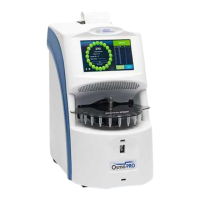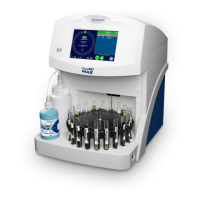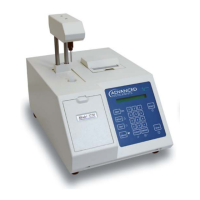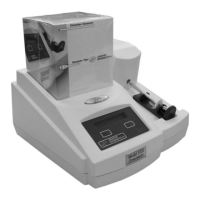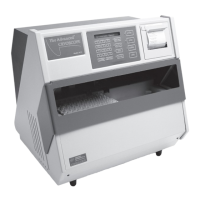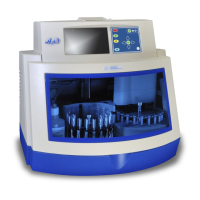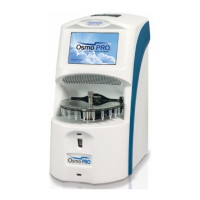11
OsmoTECHPRO Multi-Sample Micro-Osmometer Service Guide
Quality control
1 United States Pharmacopeia (USP) Standard 785 Osmolality and Osmolarity (2009). United States Pharmacopeia.
2 European Pharmacopeia (EP) Standard 7.3, Section 2.2.35 Osmolality (2019). European Pharmacopeia.
3 Japanese Pharmacopeia (JP) Standard XVI, Section 2.47 Osmolarity Determination, Japanese Pharmacopeia.
4 Chinese Pharamacopeia (CP)
Advanced Instruments recommends that you incorporate these materials into your quality control management system.
Regulatory guidance
The OsmoTECHPRO supports compliance with
applicable sections of the United States
1
, European
2
,
Japanese
3
, and Chinese
4
pharmacopeia guidelines.
Calibration standards, reference solutions, and controls
Advanced Instruments calibration standards, reference
solutions, and controls consist of stable sodium chloride
solutions of known freezing points. These standards are
traceable to the National Institute of Standards and
Technology (formerly the National Bureau of Standards).
If you use your osmometer to test biological solutions,
you should also test the osmometer performance using
actual biological solutions or controls formulated to
simulate biological solutions. Contact your Advanced
Instruments representative to obtain Protinol Protein-
Based Serum Controls.
In addition, check with your professional associations
and regulatory bodies for guidelines, rules, and
regulations.
Verifying calibration daily
Use our reference solutions and controls daily to confirm
instrument’s accuracy and before testing samples. We
recommend running two standards bracketing your
sample’s expected value.
5. Test a control or reference solution.
6. Compare test results to expected values.
• If within expected range: Start testing samples.
• If not within expected range: Retest and verify.
SeeCalibrating the instrument.
7. After recalibrating, re-run reference solutions and
controls to verify expected results.
Verifying linearity
Use our Osmolality Linearity Set to verify your
instrument’s linearity and reportable range and after
recalibrating.
Strengthen your laboratory’s Quality Control program
by using products made specifically for your
osmometer. Use Advanced Instruments reference
solutions and controls to evaluate the performance and
precision of your osmometer.
